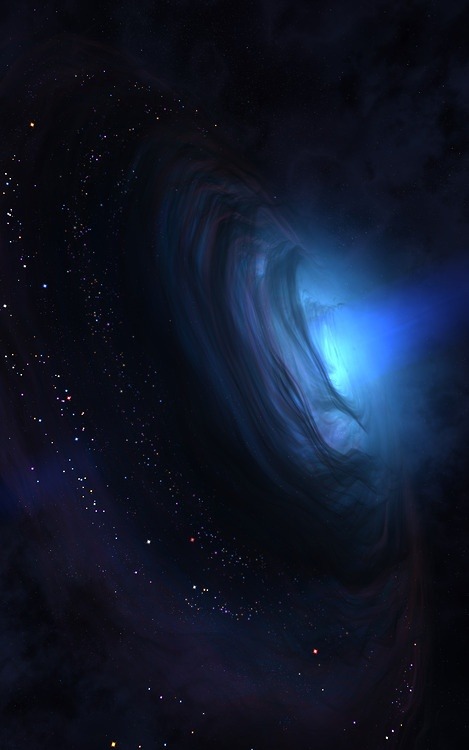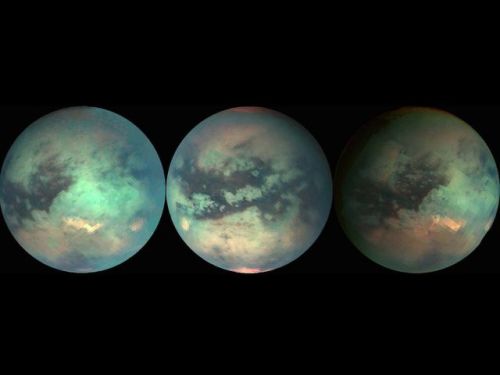Gosh But Like We Spent Hundreds Of Years Looking Up At The Stars And Wondering “is There Anybody Out
gosh but like we spent hundreds of years looking up at the stars and wondering “is there anybody out there” and hoping and guessing and imagining
because we as a species were so lonely and we wanted friends so bad, we wanted to meet other species and we wanted to talk to them and we wanted to learn from them and to stop being the only people in the universe
and we started realizing that things were maybe not going so good for us– we got scared that we were going to blow each other up, we got scared that we were going to break our planet permanently, we got scared that in a hundred years we were all going to be dead and gone and even if there were other people out there, we’d never get to meet them
and then
we built robots?
and we gave them names and we gave them brains made out of silicon and we pretended they were people and we told them hey you wanna go exploring, and of course they did, because we had made them in our own image
and maybe in a hundred years we won’t be around any more, maybe yeah the planet will be a mess and we’ll all be dead, and if other people come from the stars we won’t be around to meet them and say hi! how are you! we’re people, too! you’re not alone any more!, maybe we’ll be gone
but we built robots, who have beat-up hulls and metal brains, and who have names; and if the other people come and say, who were these people? what were they like?
the robots can say, when they made us, they called us discovery; they called us curiosity; they called us explorer; they called us spirit. they must have thought that was important.
and they told us to tell you hello.
More Posts from Outofambit and Others



This Is Big: Scientists Just Found Earth’s First-Cousin
Right now, 500 light years away from Earth, there’s a planet that looks a lot like our own. It is bathed in dim orangeish light, which at high noon is only as bright as the golden hour before sunset back home.
NASA scientists are calling the planet Kepler-186f, and it’s unlike anything they’ve found. The big news: Kepler-186f is the closest relative to the Earth that researchers have discovered.
It’s the first Earth-sized planet in the habitable zone of another star—the sweet spot between too-hot Mercury-like planets and too-cold Neptunes— and it is likely to give scientists their first real opportunity to seek life elsewhere in the universe. “It’s no longer in the realm of science fiction,” said Elisa Quintana, a researcher at the SETI Institute.
But if there is indeed life on Kepler-186f, it may not look like what we have here. Given the redder wavelengths of light on the planet, vegetation there would sprout in hues of yellow and orange instead of green.
Read more. [Image: NASA Ames/SETI Institute/JPL-Caltech]
Over 2 light years across and over 2000 light years away from Earth: The Ghost Nebula (Hubble)


Ocean on the moon Europe
Scientists' consensus is that a layer of liquid water exists beneath Europa's surface, and that heat from tidal flexing allows the subsurface ocean to remain liquid.

Europa's surface temperature averages about 110 K (−160 °C; −260 °F) at the equator and only 50 K (−220 °C; −370 °F) at the poles, keeping Europa's icy crust as hard as granite. The first hints of a subsurface ocean came from theoretical considerations of tidal heating (a consequence of Europa's slightly eccentric orbit and orbital resonance with the other Galilean moons). Galileo imaging team members argue for the existence of a subsurface ocean from analysis of Voyager and Galileo images.

The most dramatic example is "chaos terrain", a common feature on Europa's surface that some interpret as a region where the subsurface ocean has melted through the icy crust.
The thin-ice model suggests that Europa's ice shell may be only a few kilometers thick. However, most planetary scientists conclude that this model considers only those topmost layers of Europa's crust that behave elastically when affected by Jupiter's tides.

The Hubble Space Telescope acquired an image of Europa in 2012 that was interpreted to be a plume of water vapour erupting from near its south pole The image suggests the plume may be 200 km (120 mi) high, or more than 20 times the height of Mt. Everest.
Life?
So far, there is no evidence that life exists on Europa, but Europa has emerged as one of the most likely locations in the Solar System for potential habitability. Life could exist in its under-ice ocean, perhaps in an environment similar to Earth's deep-ocean hydrothermal vents. Even if Europa lacks volcanic hydrothermal activity, a 2016 NASA study found that Earth-like levels of hydrogen and oxygen could be produced through processes related to serpentinization and ice-derived oxidants, which do not directly involve volcanism.

In 2015, scientists announced that salt from a subsurface ocean may likely be coating some geological features on Europa, suggesting that the ocean is interacting with the seafloor. This may be important in determining if Europa could be habitable. The likely presence of liquid water in contact with Europa's rocky mantle has spurred calls to send a probe there.
Missions

Europa Clipper is an interplanetary mission in development by NASA comprising an orbiter. Set for a launch in October 2024, the spacecraft is being developed to study the Galilean moon Europa through a series of flybys while in orbit around Jupiter.

The Europa Lander is a proposed astrobiology mission concept by NASA to Europa, an icy moon of Jupiter. If funded and developed as a large strategic science mission, it would be launched in 2027 to complement the studies by the Europa Clipper orbiter mission and perform analyses on site. NASA's budget for fiscal year 2021 neither mandates nor allocates any funds to the mission leaving its future uncertain.
The objectives of the mission are to search for biosignatures at the subsurface ≈10 cm, to characterize the composition of non-ice near-subsurface material, and determine the proximity of liquid water and recently erupted material near the lander's location.
source

A remarkable new study on how whales behaved when attacked by humans in the 19th century has implications for the way they react to changes wreaked by humans in the 21st century. The paper, published by the Royal Society on Wednesday [17 March 2021], is authored by Hal Whitehead and Luke Rendell, pre-eminent scientists working with cetaceans, and Tim D Smith, a data scientist, and their research addresses an age-old question: if whales are so smart, why did they hang around to be killed? The answer? They didn’t. Using newly digitised logbooks detailing the hunting of sperm whales in the north Pacific, the authors discovered that within just a few years, the strike rate of the whalers’ harpoons fell by 58%. […] Before humans, orca were their only predators […]. It was a frighteningly rapid killing, and it accompanied other threats to the ironically named Pacific. From whaling and sealing stations to missionary bases, western culture was imported to an ocean that had remained largely untouched […].
——-
Headline and text published by: Philip Hoare. “Sperm whales in the 19th century shared ship attack information.” The Guardian. 17 March 2021.


Catching a sperm whale during the 19th century was much harder than even Moby Dick showed it to be. That’s because sperm whales weren’t just capable of learning the best ways to evade the whalers’ ships, they could quickly share this information with other whales, too, according to a study of whale-hunting records. […]
“At first, the whales reacted to the new threat of human hunters in exactly the same way as they would to the killer whale, which was their only predator at this time,” study lead author Hal Whitehead, a professor of biology at Dalhousie University in Nova Scotia, told Live Science. “[The sperm whales] all gathered together on the surface, put the baby in the middle, and tried to defend by biting or slapping their tails down. But when it comes to fending off Captain Ahab that’s the very worst thing they could do, they made themselves a very large target.”
The whales seem to have learned from their mistakes, and the ones that survived quickly adapted — instead of resorting to old tactics, the whalers wrote in their logbooks, the sperm whales instead chose new ones, swimming fast upwind away from the whalers’ wind-powered vessels. […]
The whales communicated with and learned from each other rapidly, and the lessons were soon integrated into their wider culture across the region, according to the researchers’ interpretation of the data.
“Each whale group that you meet at sea typically comprises two or three family units, and the units quite often split off and form other groups,” Whitehead said. “So, what we think happened is that one or two of the units that make up the group could have had encounters with humans before, and the ones who didn’t copied closely from their pals who had.“
Sperm whales are excellent intel sharers: Their highly observant, communicative nature, and the fact that each family unit only stays in larger groups for a few days at a time, means they can transmit information fast.
As studies show, that information could be news on new threats, new ways to hunt or new songs to sing.
——-
One example of whales’ extraordinary information sharing abilities involves lobtail feeding, in which a humpback whale slaps its tail hard against the water’s surface, submerges to blow disorienting bubbles around its prey, and then scoops the prey up in its mouth. Researchers first observed this tactic being used by a single whale in Cape Cod, Massachusetts, in 1980, before it spread throughout the regional population in just 10 years.
Whale culture also extends far deeper than innovative ways to feed. “Sperm whales are divided into acoustic cultural climates,” Whitehead said. “They split themselves into large clans, each with distinctive patterns of sonar clicks, like a dialect, and they only form groups with members of the same clan.”
Different whale clans each have different ways of singing, moving, hunting and looking after their calves. These differences are profound enough to even give some clans a survival advantage during El Nino events, according to Whitehead. […]
In the 20th century, whales, especially the 13 species belonging to the category of ‘great whales’ — such as blue whales, sperm whales and humpback whales — found themselves pursued by steamships and grenade harpoons that they could not escape. These whales’ numbers plummeted and they soon faced extinction. […] [T]hey still face the growing destabilization of their habitats brought about by industrial fishing, noise pollution and climate change.
——-
Headline, image, caption, and text published by: Ben Turner. “Sperm whales outwitted 19th-century whalers by sharing evasive tactics.” Live Science. 19 March 2021.

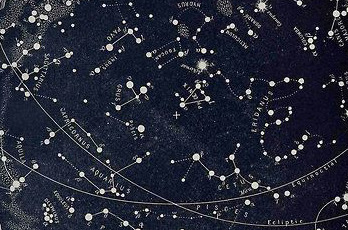
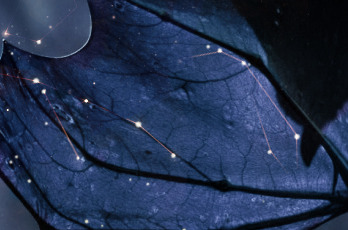
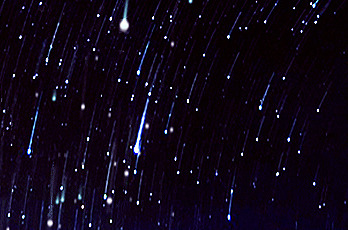






-
 illusionxwrites reblogged this · 1 week ago
illusionxwrites reblogged this · 1 week ago -
 aureolinthoughts reblogged this · 1 week ago
aureolinthoughts reblogged this · 1 week ago -
 kyziracrow liked this · 2 weeks ago
kyziracrow liked this · 2 weeks ago -
 huayan liked this · 2 weeks ago
huayan liked this · 2 weeks ago -
 kaersmrhen liked this · 2 weeks ago
kaersmrhen liked this · 2 weeks ago -
 onth3cusp liked this · 2 weeks ago
onth3cusp liked this · 2 weeks ago -
 dreamsgoat liked this · 2 weeks ago
dreamsgoat liked this · 2 weeks ago -
 crackinglamb reblogged this · 2 weeks ago
crackinglamb reblogged this · 2 weeks ago -
 chamomiletea511 reblogged this · 2 weeks ago
chamomiletea511 reblogged this · 2 weeks ago -
 galecor3 liked this · 2 weeks ago
galecor3 liked this · 2 weeks ago -
 aubergine-with-no-peen reblogged this · 2 weeks ago
aubergine-with-no-peen reblogged this · 2 weeks ago -
 ellalily reblogged this · 2 weeks ago
ellalily reblogged this · 2 weeks ago -
 ellalily liked this · 2 weeks ago
ellalily liked this · 2 weeks ago -
 chamomiletea511 liked this · 2 weeks ago
chamomiletea511 liked this · 2 weeks ago -
 pebbltree reblogged this · 2 weeks ago
pebbltree reblogged this · 2 weeks ago -
 my-catsface liked this · 2 weeks ago
my-catsface liked this · 2 weeks ago -
 buggibat liked this · 2 weeks ago
buggibat liked this · 2 weeks ago -
 thecaptainsparky reblogged this · 2 weeks ago
thecaptainsparky reblogged this · 2 weeks ago -
 thesadumbreon reblogged this · 2 weeks ago
thesadumbreon reblogged this · 2 weeks ago -
 thesadumbreon reblogged this · 2 weeks ago
thesadumbreon reblogged this · 2 weeks ago -
 thesadumbreon reblogged this · 2 weeks ago
thesadumbreon reblogged this · 2 weeks ago -
 thesadumbreon reblogged this · 2 weeks ago
thesadumbreon reblogged this · 2 weeks ago -
 thesadumbreon reblogged this · 2 weeks ago
thesadumbreon reblogged this · 2 weeks ago -
 thesadumbreon reblogged this · 2 weeks ago
thesadumbreon reblogged this · 2 weeks ago -
 thesadumbreon reblogged this · 2 weeks ago
thesadumbreon reblogged this · 2 weeks ago -
 thesadumbreon reblogged this · 2 weeks ago
thesadumbreon reblogged this · 2 weeks ago -
 thesadumbreon reblogged this · 2 weeks ago
thesadumbreon reblogged this · 2 weeks ago -
 thesadumbreon reblogged this · 2 weeks ago
thesadumbreon reblogged this · 2 weeks ago -
 thesadumbreon reblogged this · 2 weeks ago
thesadumbreon reblogged this · 2 weeks ago -
 thesadumbreon reblogged this · 2 weeks ago
thesadumbreon reblogged this · 2 weeks ago -
 thesadumbreon reblogged this · 2 weeks ago
thesadumbreon reblogged this · 2 weeks ago -
 thesadumbreon reblogged this · 2 weeks ago
thesadumbreon reblogged this · 2 weeks ago -
 thesadumbreon reblogged this · 2 weeks ago
thesadumbreon reblogged this · 2 weeks ago -
 blackhunter666 reblogged this · 2 weeks ago
blackhunter666 reblogged this · 2 weeks ago -
 pendragony liked this · 2 weeks ago
pendragony liked this · 2 weeks ago -
 phosphorescence7991 liked this · 3 weeks ago
phosphorescence7991 liked this · 3 weeks ago -
 lepetitselkie reblogged this · 3 weeks ago
lepetitselkie reblogged this · 3 weeks ago -
 aratherdifficultusername-blog liked this · 3 weeks ago
aratherdifficultusername-blog liked this · 3 weeks ago -
 youwillneverguessmyurl liked this · 3 weeks ago
youwillneverguessmyurl liked this · 3 weeks ago -
 tharjuh liked this · 3 weeks ago
tharjuh liked this · 3 weeks ago -
 mittensthefirst reblogged this · 3 weeks ago
mittensthefirst reblogged this · 3 weeks ago -
 mittensthefirst liked this · 3 weeks ago
mittensthefirst liked this · 3 weeks ago -
 chicksdigsaurs reblogged this · 3 weeks ago
chicksdigsaurs reblogged this · 3 weeks ago -
 chicksdigsaurs liked this · 3 weeks ago
chicksdigsaurs liked this · 3 weeks ago -
 xenomorphic-warrior liked this · 3 weeks ago
xenomorphic-warrior liked this · 3 weeks ago -
 lywinis reblogged this · 3 weeks ago
lywinis reblogged this · 3 weeks ago -
 theunsinkablesappho reblogged this · 3 weeks ago
theunsinkablesappho reblogged this · 3 weeks ago -
 cazza1805 reblogged this · 3 weeks ago
cazza1805 reblogged this · 3 weeks ago
A personal temporospatial claudication for Young Wizards fandom-related posts and general space nonsense.
288 posts

